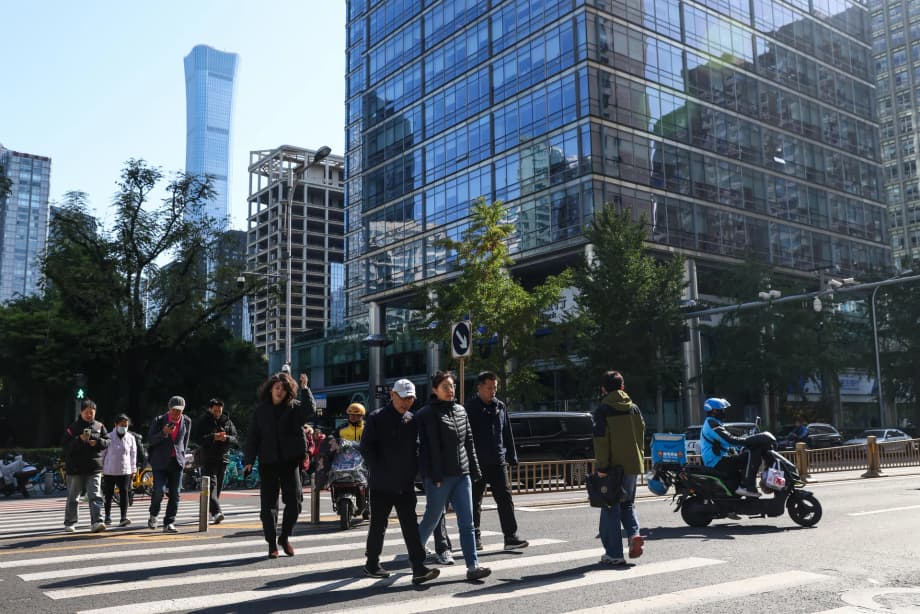A new chapter for the global factory
For four decades, China’s growth engine ran on an extraordinary mix of infrastructure buildout, industrial scale, and a managed currency that powered an export juggernaut. That model lifted incomes and reshaped global supply chains. It also created tough side effects at home, from crowded markets and price wars to debt overhangs and environmental stress. As Beijing prepares the Fifteenth Five Year Plan, policymakers are signaling a reset. The new vocabulary of anti involution, now common in public debate, captures a core aim: reduce destructive competition and reward efficiency, innovation, and genuine productivity.
- A new chapter for the global factory
- Why the old growth model is losing steam
- Policy signals to watch
- Property slump, debt and deflation risk explained
- From export engines to domestic demand
- Tech self reliance and industrial upgrade
- Green growth becomes a central engine
- Where investors may find value now
- Risks that still matter
- How foreign businesses are positioning
- What to watch in the Fifteenth Five Year Plan
- Key Points
The policy direction is becoming clearer. Leaders want to shift weight from brute investment and commodity scale to high value manufacturing, advanced technology, and stronger domestic demand. This does not mean abandoning factories, it means upgrading what and how China produces, and elevating household consumption as a larger share of the economy. Green growth sits at the heart of the plan, both to meet climate goals and to anchor new industrial strengths. For investors, the change presents risks, but also fresh openings that are beginning to take shape across equities, credit, and real assets.
Why the old growth model is losing steam
Since 1978, China averaged very high annual growth and moved nearly 800 million people out of extreme poverty. Success came with a cost. Infrastructure returns diminished, demographic tailwinds faded, and the export engine ran into more trade friction. At the same time, a heavy reliance on investment created imbalances in local government finances and in the property sector. That is why the official growth narrative now emphasizes quality in place of quantity, with more services and consumption, stronger rule of law for markets, and a lighter carbon footprint.
The World Bank distills the shift in plain terms. In its country overview, the institution notes that the investment and export heavy model has run its course and created strains that must be addressed by new drivers of growth.
Before adding new engines, policy must stabilize the current ones. Growth near 5 percent in the first half of 2024 showed resilience, but it was uneven and is expected to slow without reform. Productivity trends have softened, the working age population is shrinking, and the returns to more concrete and steel have waned. A smooth handoff toward services, consumption, and advanced manufacturing will take time and steady policy, yet it is where momentum is now aimed.
The World Bank puts it bluntly:
China’s growth model, based on investment and export oriented manufacturing, has reached its limits, resulting in economic, social, and environmental imbalances.
This context helps explain why Beijing is linking near term stabilization to medium term change. The aim is not simply to hit a yearly growth target. It is to rewire what drives growth in the first place.
Policy signals to watch
Recent meetings of top party and government bodies point to a policy pivot from strict risk control toward stronger growth support. Monetary easing by the central bank has lowered borrowing costs and improved liquidity. There is targeted help for the stock market and mortgage holders, along with tools to reduce funding stress for local governments. Officials have also introduced a new monetary focus on “reasonable price increases,” a signal that they want to avoid a slide into deflation while still preserving currency and financial stability.
Fiscal policy is being deployed with more precision. Support has concentrated on clearing a backlog of housing completions, refinancing local debt at lower cost, and upgrading social safety nets that can raise household confidence. The broader outline for the next five years highlights technology self reliance, a modern industrial base, and a deeper, fairer market environment. Each of these points to a more balanced policy mix where both state and private capital can contribute.
External conditions shape these choices. The Federal Reserve’s rate path influences capital flows and the renminbi. Trade actions abroad affect sectors like electric vehicles and batteries. Policymakers are calibrating pace and scale, aiming to promote recovery without triggering disruptive currency moves or a new cycle of debt reliance.
Property slump, debt and deflation risk explained
Property has been the most visible drag since 2020. Years of rapid expansion left developers with large debts and many projects unfinished when cash flows faltered. The government’s response has focused on a difficult balance: let weak firms restructure, protect homebuyers by finishing presold homes, and prevent a deeper shock to local public finances that relied on land sales. This takes time. Prices for existing homes have fallen from their peak, new starts plunged, and related industries from cement to appliances lost momentum.
Households have turned cautious, with savings rising as real estate wealth softened. That caution, plus lower input costs, pushed inflation near zero in parts of 2024. The central bank’s stress on “reasonable price increases” acknowledges the risk that entrenched disinflation could weaken growth expectations. The combination of a property correction and high private sector debt created a balance sheet mindset for many firms and families. Paying down obligations often beats expanding capacity.
Local government finances remain a key watch point. Debt swap programs and refinancing tools aim to stretch maturities and lower interest burdens. Over time, stronger budget transparency and rules for off balance sheet vehicles can reduce risk. In the near term, the priority is to keep basic services and investment running without reigniting the excesses that produced the problem.
From export engines to domestic demand
China’s consumption share of GDP remains below that of large developed economies, often cited at less than 40 percent. That gap is both a challenge and an opportunity. Raising household incomes and confidence, improving pensions and health coverage, and making social services more portable across cities can encourage spending. Ongoing urbanization, upgrades in logistics and retail, and a growing services sector can also lift consumption’s role.
Anti involution policy is meant to reinforce that shift. The idea is to curb wasteful competition that squeezes margins and wages, to reward firms that invest in research, branding and service, and to reduce the race to the bottom in prices that undermines sustainable growth. Sectors with chronic overcapacity are likely to see tighter capacity control, while incentives should tilt toward high quality output and better capital discipline.
What anti involution could change
In consumer goods, fewer price wars and more product differentiation can support margins and salaries. In services, firms that focus on user experience, data security, and reliable after sales support may gain share. In heavy industry, stricter efficiency and environmental standards can accelerate consolidation. Across the board, the winners are likely to be companies that invest in human capital and innovation, not those that expand volume at any cost.
Tech self reliance and industrial upgrade
Policy blueprints for the coming five years emphasize advanced manufacturing, secure supply chains, and leadership in emerging technologies. Areas singled out include artificial intelligence, quantum related applications, biomanufacturing, next generation communications, and new energy industries from batteries to hydrogen. The aim is to keep the country a manufacturing power, but with a larger concentration of value added production, better process control, and a stronger base of domestic components.
That priority is a reaction to global trade frictions and technology restrictions, but it also reflects a long running domestic agenda. Supply chain redesign is already visible in equipment, components, and materials. The export mix has shifted toward higher tech goods, while domestic suppliers keep gaining in automotive, electronics, and industrial automation. Investors should expect continued policy support for firms that can reduce reliance on imported know how and deepen local ecosystems.
Green growth becomes a central engine
Climate goals, peak carbon before 2030 and neutrality before 2060, are reshaping China’s energy and industrial base. The scale is striking. Investments in clean energy and related infrastructure have surged. The country supplies a large majority of global EV batteries, leads the world in solar production, and has been commissioning record renewable capacity. In 2023, China added as much solar capacity as the entire world did the year before, and accounted for most new wind farm installations. Costs for the green toolkit fell as factories scaled, accelerating adoption at home and abroad.
China’s role is not only domestic. Companies are investing in green manufacturing abroad, from batteries and solar modules to electric vehicles and hydrogen equipment. These investments span dozens of countries and are often driven by firms seeking access to protected markets and closer proximity to consumers. The commercial nature of this expansion, with risks on company balance sheets rather than on host governments, makes it a different proposition from the large state led infrastructure projects of the past decade.
For investors, green growth is more than a theme. It is a new industrial architecture that reaches across mining, materials, precision machinery, software, power grids, and recycling. Grid upgrades, storage, and industrial electrification will require sustained capital. Policy alignment is strong, from city level pilot programs to national targets that pull investment into priority segments.
The World Economic Forum describes China’s role in the clean energy race in clear terms:
China is a key driver in the development of the electric vehicle industry and the global green transition.
This leadership is creating export opportunities for Chinese firms and helping other countries meet their own climate targets, while reinforcing a core pillar of China’s next growth phase.
Where investors may find value now
Markets have priced in many of the headwinds, leaving select assets on attractive valuations relative to history and to global peers. That does not remove risk. It does mean the balance between price and potential has improved in areas closely tied to domestic recovery and structural upgrade.
Equities
Onshore A shares offer a focused way to tap domestic trends. These markets have higher retail participation and can be volatile, yet they are more aligned with policy priorities and less exposed to trade actions than export heavy offshore names. Areas with improving prospects include companies that benefit from consumption upgrades, health care services, industrial automation, power equipment and grid technology, and the broader clean energy supply chain. Value can also be found in firms with rising shareholder returns and better governance, including leaders in niche components that anchor supply chain security.
Investors with a quality bias may favor companies that deploy capital efficiently, communicate clearly with investors, and show pricing power rather than chase volume. Anti involution objectives suggest premium on efficiency, branding, and service, which should support margins for capable operators.
Fixed income
With inflation low and monetary policy accommodative, onshore government bonds and high grade corporate credit can provide income with potential for price support if easing continues. Companies with stable cash flows in utilities, transport, and consumer staples can be candidates. Offshore credit dynamics are improving as more firms refinance domestically, easing issuance pressure in external markets. As always, credit selection is crucial, with careful attention to balance sheet strength and transparency.
Risks that still matter
Geopolitics remains the most visible risk. Tariffs, export controls, and investment screening can affect specific sectors, especially advanced technology and vehicles. Currency swings can alter returns for foreign investors. Domestic regulation will continue to evolve as authorities push for fair competition, data security, and financial stability. Corporate governance standards vary, and some firms will struggle to adapt to tighter capital discipline. The property correction and local government debt management are works in progress. Deflation risk, while being addressed, deserves close monitoring if household confidence does not recover as expected.
Position sizing and diversification matter in this environment. A disciplined approach that distinguishes between cyclical repair and structural winners can help manage drawdowns while keeping exposure to recovery and reform.
How foreign businesses are positioning
International chambers and multinational executives describe a mixed but improving picture. Many firms want more clarity on regulation and equal treatment. At the same time, they see concrete openings in green energy, advanced manufacturing, health care, agriculture, and digital services. European manufacturers are localizing research and production to serve both domestic and global markets. Australian and Southeast Asian companies are exploring partnerships in energy transition and smart infrastructure. Companies that align with China’s focus on industrial modernization, green development, and service quality are finding room to grow.
The emphasis on stronger domestic demand is also changing market entry strategies. Consumer brands are investing in local supply chains and service networks. Technology firms are building partnerships to navigate standards and data requirements. The message from boardrooms is consistent, seek predictable rules, align with long term policy goals, and build deeper local capabilities.
What to watch in the Fifteenth Five Year Plan
The Fifteenth Five Year Plan will formalize many of the signals already visible. Key elements to watch include the scale and form of fiscal support for consumption, such as measures that reduce household burdens in education, health, and elder care. Look for policies that expand basic services across cities, which can raise spending by migrant workers who settle permanently.
Technology priorities will be spelled out in more detail, with targets for core components, software, and industrial equipment. Capital market reforms may continue, including measures to improve disclosure, raise listing quality, and encourage long term investment. Property policy will likely center on finishing projects and supporting first time buyers, while discouraging speculative activity. Local government debt management will aim for more transparent budgets and stricter rules on off balance sheet borrowing. Green targets will permeate sector plans, from power and transport to agriculture and construction, with an emphasis on energy efficiency and clean electricity.
Anti involution will inform competition policy. Expect stronger enforcement against predatory pricing, incentives for research and branding, and steps that reduce redundant capacity in sectors with chronic oversupply. Together, these moves would tilt investment toward firms that create value for customers and for the economy rather than chase scale alone.
Key Points
- Beijing is pivoting from investment heavy, export led growth toward consumption, services, advanced manufacturing, and green industries.
- Anti involution aims to curb wasteful competition, favor efficient and innovative firms, and improve corporate profitability.
- Growth near 5 percent in early 2024 masked uneven momentum, with structural pressures from demographics, soft productivity, and property stress.
- Policy focus has moved from risk control to growth support, with monetary easing, targeted fiscal steps, and help for local government refinancing.
- The central bank’s stress on reasonable price increases signals attention to deflation risk while preserving financial stability.
- Property correction and local debt remain key watch points as authorities prioritize project completion and budget repair.
- Tech self reliance and industrial upgrade, including AI, advanced components, and new energy, anchor the next phase of manufacturing strength.
- Green growth is central, with global leadership in batteries, solar, wind, and growing outward investment in clean technology supply chains.
- Onshore A shares and high grade onshore credit offer selective opportunities tied to domestic recovery and policy support.
- Main risks include geopolitics, currency moves, evolving regulation, corporate governance gaps, and the pace of household confidence recovery.




